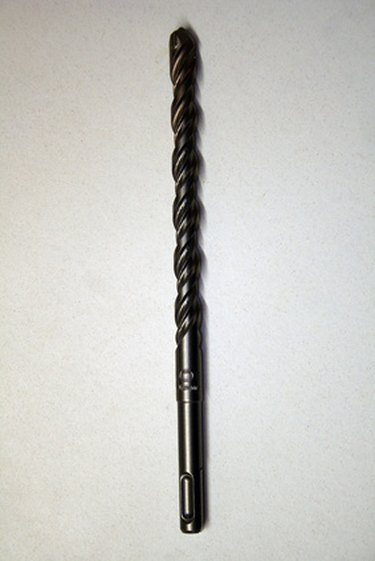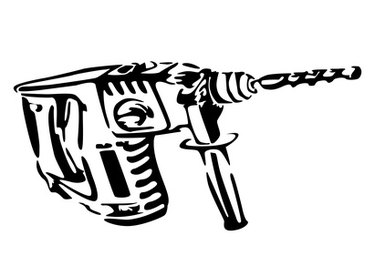Things You'll Need
Hammer drill
Carbide drill bit

Block or concrete basement walls create a challenge for homeowners who want or need to attach materials or fixtures to them. It is not difficult to drill into these walls, but it does take a special drill. A rotary hammer drill is used to make holes in block and concrete. It incorporates a hammering action while turning the drill bit. Hammer drills of various sizes can be purchased at most home-improvement stores. Some use standard carbide drill bits that can be used in any drill, while others use bits specially made for hammer drills.
Smaller Holes
Step 1

Insert a carbide bit into the rotary hammer drill and tighten the chuck with the key. Some drills have a chuck and others use a SDS drill bit that snaps in. A rotary hammer drill that uses SDS bits is a favorite of contractors because the special bit doesn't slip.
Video of the Day
Step 2
Turn the knob on the drill to the hammer position. Each drill is a little different. Check your manual for specifics.
Step 3
Press the switch and apply pressure to the wall. Drill in about an inch and pull the drill bit in and out to remove the cement powder. Drill another inch and do the same. Drilling in concrete can be tedious, so don't rush it. Let the drill do the work by holding consistent pressure on it. Keep the speed low; if the drill bit spins too fast, you could dull it, making drilling more difficult. When the speed is right, the drill bit will slowly penetrate the wall. In most cases, the best drilling speed will be half that of full speed. You will know your drill bit is spinning too fast if the rate of penetration is too slow.
Video of the Day
Larger Holes
Step 1
Drill a 3/8-inch hole as a pilot hole. Large drill bits tend to bounce around and can be difficult to get started. By drilling a pilot hole, you are providing a guide for the larger bit.
Step 2

Insert the larger bit and drill the hole to the proper depth, working your way in and out to remove the concrete dust that clogs up the hole. Larger holes should be drilled by more powerful rotary drills that are easier to hold. These heavy-duty drills come with large handles for your safety.
Step 3
Clean out the hole by quickly inserting the fast-moving drill bit in and out a few times.
Warning
Always hold a rotary hammer drill in a way that it is easy to let go. If the drill bit binds, the drill will spin and could injure you if you can't let go. These drills are powerful and you will not be able to hold them back.